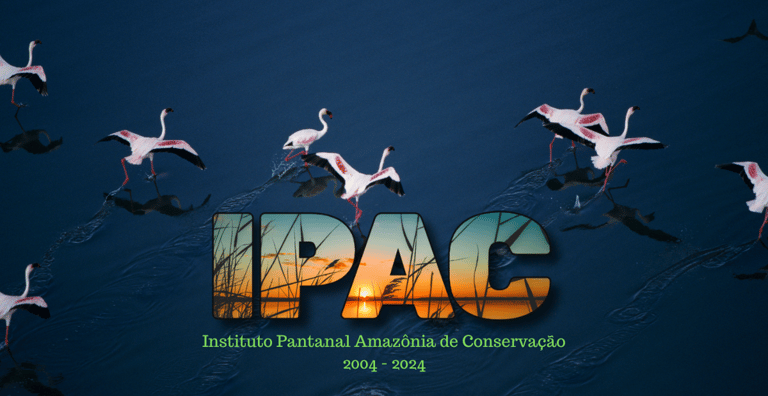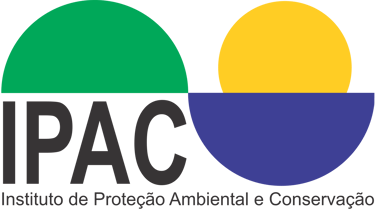TANGARÁ DA SERRA-MT . BRASIL 55 65 99987-8717 IPactangara@GMAIL.COM
Socioeconomic Survey of the
Vale do Sol Community I
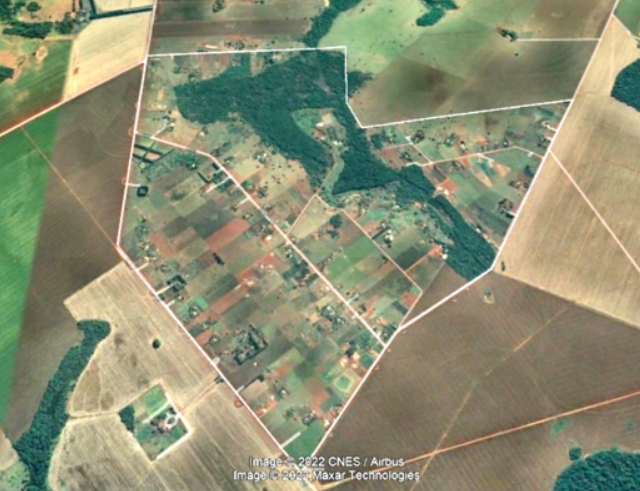

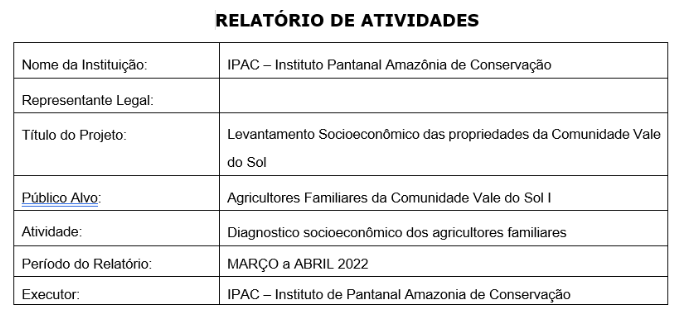

Activities
Data collection began with visits and forms were filled out from producers in the Vale do Sol I community.
It is important to note that some farmers were hesitant to answer the forms during the first contact, as can be seen by the negative responses to some of the questions requested, making it necessary to return to the visits at another time or by observing and developing actions to collect data.
All values provided by producers and used in the graphs below are the annual average for 2022 that each producer provided.
Another difficulty encountered is the lack of accounting control of their expenses and revenues, making it an impossible task when it comes to measuring the individual production of each item.
The entire Diagnosis was built based on the reports of the producers interviewed.
Property Title
During the data collection for the diagnosis, it was noted that residents were generally dissatisfied with a series of problems that were occurring. When asked about their expectations regarding the acquisition of the lots, they reported that they expected greater action from the community and the association to work together to address the problems of the land. Some reported an interest in selling, due to a lack of resources to invest, since the lands have not yet been regularized, in order to obtain definitive titles.
According to the graph, the settlers are owners and have been there since the beginning of the settlement, and there are no squatters. They are producers who arrived at the beginning of the division of the lots and, with rare exceptions, are tenants (6).
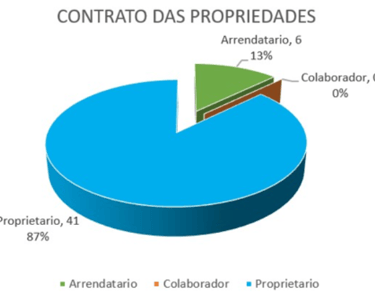

Age range
Most of the producers are between 51 and 60 years old (36%), with some health problems such as hypertension, which reduces their working time in the fields because they cannot be exposed to intense heat. It is worth noting that the largest number of settlers are in this age range, followed by those who are older, between 61 and 70 years old, totaling 30%, then the 41 to 50 age range with 17%, those between 71 and 80 years old and 34 to 40 years old with 6%, and the smallest number in the 21 to 30 age range with 4%. The few young people who are still in the settlement report the desire to live in the city. Perhaps due to a lack of knowledge or a lack of incentives to feel important as a small family producer.
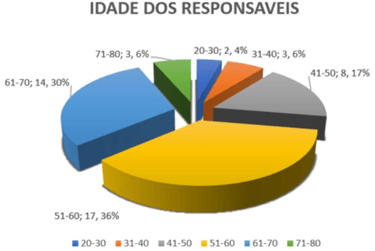

People residing on the property
It was observed during the interviews that each property housed more than one person or even families within its space. In this sense, the question was asked about the number of people who lived in the same place. From the data collected, it was possible to verify that 16 properties where only two people live represent 34%, where 4 people live there was a total of 10 properties (21%), where 3 people live there were 8 properties (17%), 7 and 5 people were found in 4 properties, 6 people in a single property and 5 families did not respond.
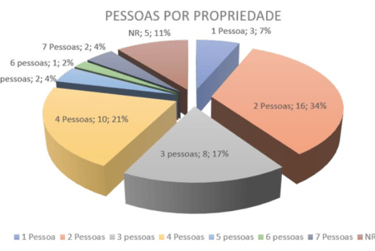

Associative participation
When asked about their participation in an association, 28 (58%) said they did not participate in any association, although they were in favor of creating a unified community association. The remaining 20 farmers (42%) said they participated in an association.
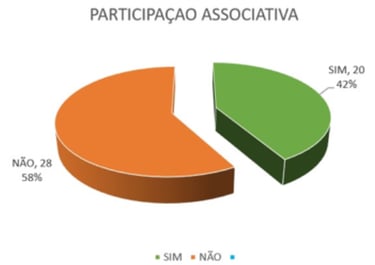

Health
Of the families interviewed, 28 families (60%) said they had someone with health problems at home. These ranged from high blood pressure to more serious problems such as spinal disorders and cancer. The remaining 19 families (40%) did not report any type of illness.
Physical structures on properties
Almost all of the houses on the properties are made of masonry with an internal bathroom. Some are lacking finishing and also have external bathrooms.
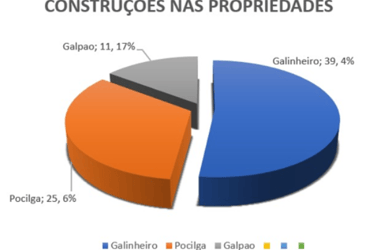

Production area
Of the 47 properties that are part of the Vale do Sol Community, 43% are planting areas and 57% are pasture areas, as shown in the graph below.
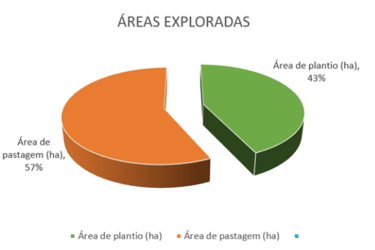

Earth exploration equipment
When asked about the ownership of their own equipment for working the land, 33 families (63%) said they did not own any type of equipment and whenever they needed it for some work, they asked their neighbors for help. Those who did have some type of equipment were those who had a tractor, a total of 6 families (11%), 5 families had a small tractor (10%), 3 families had a chainsaw (3%). 3 families had a brush cutter (3%), 1 resident had a mixer (2%) and 1 resident had a harrow (2%).
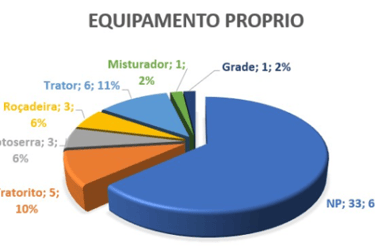

Family maintenance expenses
Expenses vary according to the number of members in each family and their production.
Electricity is usually low in value because it is classified as energy for rural areas, but it can reach high values on producing properties, when it is sometimes necessary to turn on showers, equipment such as pumps and food processing machines to feed animals. On average, it represents 10% of total expenses.
Another value that weighs on family budgets, in the total amount of expenses, is consumption in supermarkets, which reaches 33% of the family budget, with prices having increased more frequently in recent times, with greater increases in the price of products. However, producers prefer to save on other items to maintain a healthy diet, maintaining the existing standard.
Consultations, exams, medications and surgical procedures are also part of the expenses, with around 16%, which weigh more heavily on the pockets of producers and, even though they are paid for by the SUS, some exams, such as emergency ones, still need to be done privately.
Not counting amounts like the ones we just saw, we can also mention family maintenance, which represents a reasonable share of miscellaneous expenses such as small purchases, household appliances, maintenance of household equipment, clothing, footwear and hygiene and cleaning products, totaling 30%.
Another factor that adds to the burden are health, dental and funeral plans, which account for 11%.
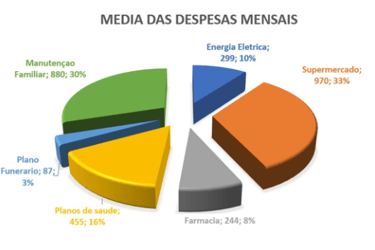

Production
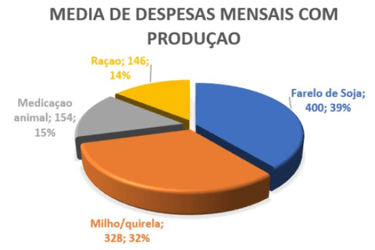

It can be seen that the vast majority of farmers produce free-range chicken and pigs, perhaps because of the culture they inherited from their parents.
These farmers do not calculate the cost of production or revenue, whether individually for each product or for the total, which prevents them from reporting the cost of production of each item or the revenue individually.
It can be seen that the farmers, despite the difficulties they reported in the settlement, all make profits from selling their products.
It can be seen that some families are just starting to produce, so they are not counting profits from the farm and need to seek income in the city or on farms near the settlement in order to continue investing.
The graph below shows some types of production that are carried out by the farmers, without major economic aspirations and in a disorganized manner due to the lack of technical advice and organization on the part of the association.
We note that cassava cultivation predominates, with 27 families producing, which corresponds to 39% of all production. Next comes the planting of fruits such as mango, guava, dragon fruit, lemon and others, representing 16%. Vegetables are in third place in production, with 11% and vegetable plantations with 9% of the total.
In terms of animal production, we have the commercialization of poultry with 10%, pigs with 4% and cattle with 1%. The milk produced and sold represents 4% and the production of cheese and spices such as pepper, herbs and some preserved products such as sweets and cookies represent 6% of production.
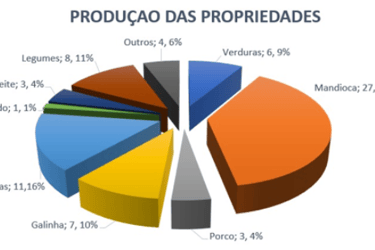

Water use
In the settlement, producers use drinking water from artesian and semi-artesian wells and water mines.
All the wells in the settlement, whether artesian, semi-artesian or water mines, are properly equipped with water pumps.
Of the total, 24 families (44%) use rural wells to collect water for domestic use and for animals. 21 families (38%) use artesian wells and 9 families (16%) use semi-artesian wells. Only one family obtains water from a mine.
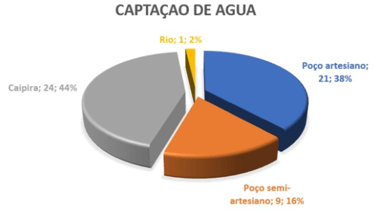

Irrigation
There is no irrigation project in the community and this is one of the demands. During the dry season, farmers suffer from a lack of water and some even bring water from the city to supply their homes and water their animals. This lack of water makes some crops, such as vegetables, unviable.
Waste disposal
The waste produced on the properties is disposed of as follows:
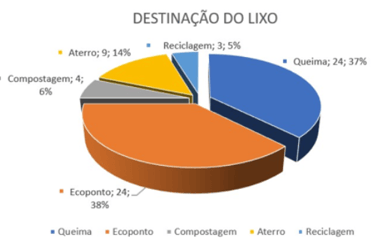

Results achieved
Identification of the main family producers in the municipality;
Collection of data from the owners;
Complementing the results of future workshops;
Identification of the problems that most affect residents.
First Workshop - "Wailing Wall"
The activity “Wailing Wall”. Developed by IPAC – Instituto Pantanal Amazônia de Conservação, using the methodology of the Cultivating Good Water Program of Itaipu Binacional, through its representative and speaker Jair Kotz, it had the support of the Public Prosecutor's Office of the State of Mato Grosso and the Association of Family Farmers Vale do Sol I.
This methodology covers social, community, organizational, associative and production aspects.
In this work, the participants reported the difficulties that the Vale do Sol I Community has been facing, especially with regard to social, production, economic, health, education, infrastructure and in relation to the provision of these services by public institutions to the community.
The farmers attended in large numbers and had the opportunity to discuss with the speaker and even among themselves, “regrets” that, systematized, will serve as a basis for the development of the next workshops or even a new, more specific survey, if necessary, to support new actions.
At the end of the meetings, a coffee break was served, which allowed for a more informal conversation with some people from the community and where the Speaker could receive suggestions for solving some more serious problems.
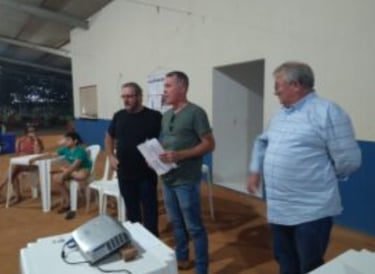

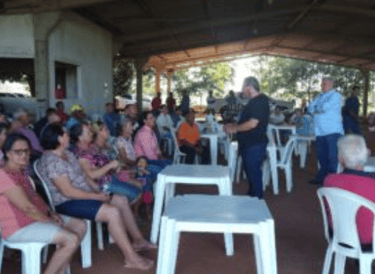

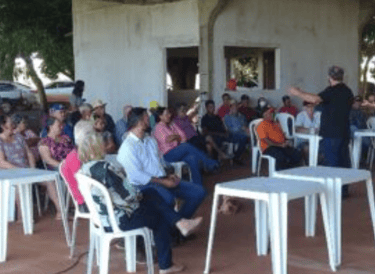

Second Workshop - "Tree of Hope"
The “Tree of Hope” activity, like the “Wailing Wall” workshop, was developed by IPAC – Instituto Pantanal Amazônia de Conservação, using the methodology of the Cultivating Good Water Program of Itaipu Binacional, through its representative and speaker Jair Kotz, and had the support of the Public Prosecutor's Office of the State of Mato Grosso and the Association of Family Farmers Vale do Sol I.
This methodology seeks to provide solutions to the problems presented in the first workshop. It covers social, community, organizational, associative and production aspects.
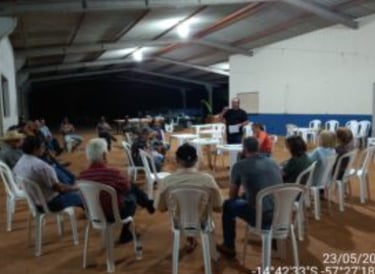

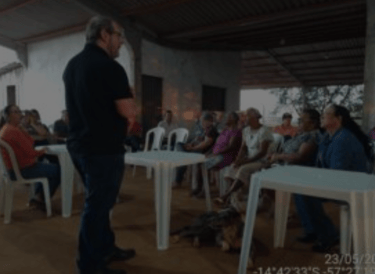

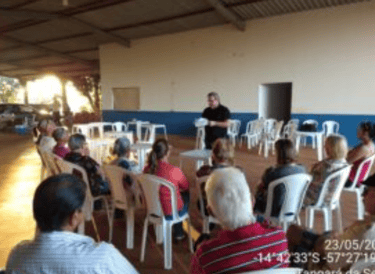

WORKSHOPS
Community Photos
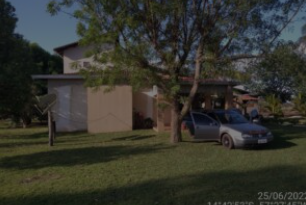

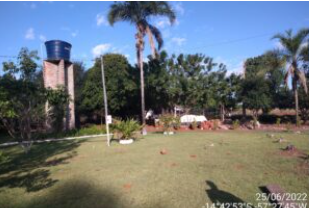

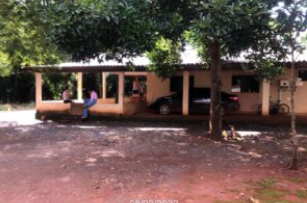

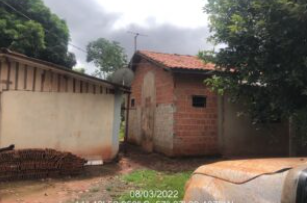

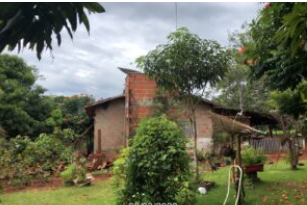

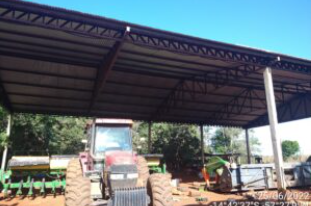

Production expenses
In terms of production, we have seen an increase in costs of over 100% in recent months. Soybean meal is the most consumed by producers, accounting for 39% of expenses, with a 50 kg bag costing an average of R$2,360.00.
The cost of medicines for animal care has been increasing frequently and currently accounts for 15% of production expenses.
Corn, which accounts for 32% of expenses, currently costs R$88.00 per 60 kg bag.
Animal feed prices have also increased in line with the increase in raw materials and impact the production budget by 14%.
Institute for environmental preservation and conservation
We defend environmental and cultural preservation.
CONTACT
contato@ipac.org.br
55 65 99987-8717


